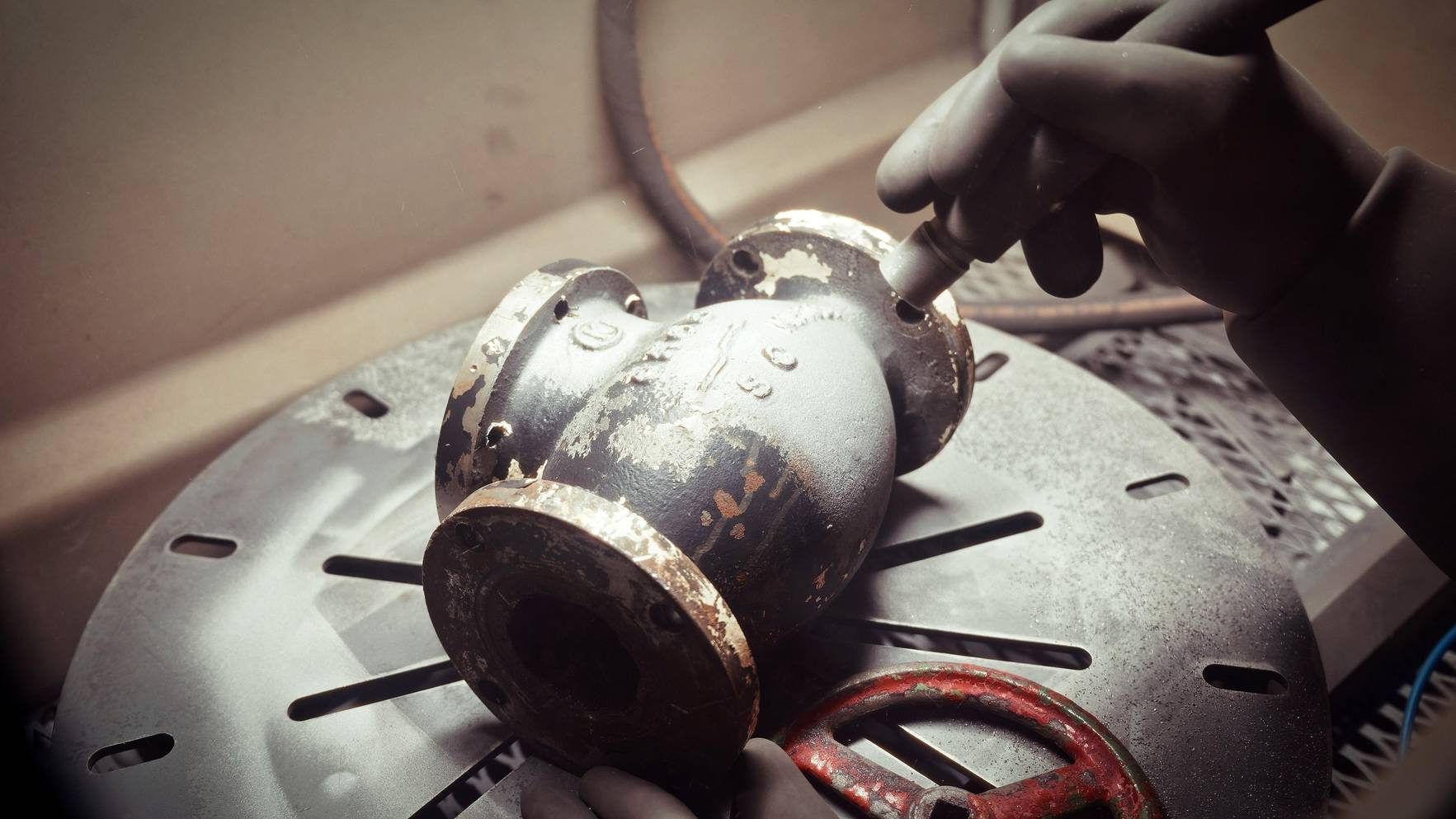Suction vs. pressure feed blasting: which is right for you?
When it comes to abrasive blasting, choosing the right equipment is crucial for achieving optimal results. Two popular methods in the industry are suction feed and pressure feed blasting. Understanding the differences between these methods can help you make an informed decision for your specific needs.
Demo video
In this video, we demonstrate the efficiency difference between suction and pressure feed blasting. We used the same abrasive type and size, as well as the same compressed air supply of 590 l/min (21 CFM). See the results for yourself and decide which one would best fit your workshop.
By using a larger nozzle (which does require more compressed air), the pressure feed method will work even faster!
What is suction feed blasting?
Suction feed blasting, also known as siphon blasting, operates by creating a vacuum that pulls the abrasive media into the blast gun. The compressed air passes through the gun, creating a Venturi effect that draws the abrasive into the air stream.
Advantages of suction feed blasting:
- Cost-effective: Typically, suction feed systems are less expensive to purchase.
- Lower air consumption: Suction feed systems generally use less compressed air, making them a good match for smaller compressors. However, this lower air consumption also means reduced production speed.
Disadvantages:
- Lower efficiency: Suction feed systems deliver lower abrasive velocity, leading to longer blasting times.
- Limited media types: Not suitable for heavier or denser abrasive media.
What is pressure feed blasting?
This method uses a pressurized blast pot to feed abrasive media directly into the blast hose and through the nozzle. As a result, the abrasive is propelled at a much higher velocity. Unlike suction feed systems, all compressed air energy is focused solely on blasting, without the need to draw the abrasive in.
Advantages of pressure feed blasting:
- Higher efficiency: The increased velocity and force result in faster cleaning and stripping, saving time and labor.
- Versatility: Pressure systems can handle a wide range of abrasive media, including heavier and denser types.
Disadvantages:
- Higher initial cost: Pressure feed systems are generally more expensive to purchase.
- Increased air requirements: Pressure feed systems typically require more compressed air. However, by using smaller nozzles, air consumption can be adjusted to match that of suction blasting when a larger compressor is not available or possible.
Why choose pressure blasting?
Although pressure blasting systems may require a higher initial investment, their advantages far outweigh the costs. With superior efficiency, versatility, and performance, pressure blasting is the optimal choice for all types of applications and projects, from small-scale tasks to the most demanding industrial jobs.
At Gritco, we offer a range of quality pressure blast cabinets designed to meet the needs of various industries. Our cabinets provide unparalleled efficiency, durability, and performance, ensuring you get the best results for your abrasive blasting needs.
Ready to upgrade your blasting equipment?
Visit our Gritco Pressure Blast Cabinets page for more information or contact us to request a personalized quote today. Let us help you find the perfect solution for your abrasive blasting requirements.
